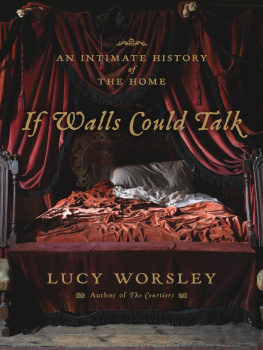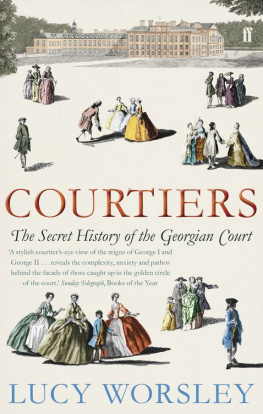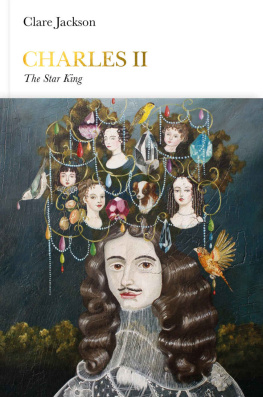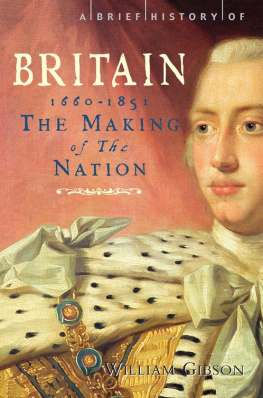Cavalier
A TALE OF
CHIVALRY, PASSION,
AND GREAT HOUSES
Lucy Worsley
BLOOMSBURY
Copyright by Lucy Worsley 2007
All rights reserved. No part of this book may be used or reproduced in any manner whatsoever without written permission from the publisher except in the case of brief quotations embodied in critical articles or reviews. For information address Bloomsbury USA, 175 Fifth Avenue, New York, NY 10010.
Published by Bloomsbury USA, New York
Distributed to the trade by Holtzbrinck Publishers
All papers used by Bloomsbury USA are natural, recyclable products made from wood grown in well-managed forests. The manufacturing processes conform to the environmental regulations of the country of origin.
LIBRARY OF CONGRESS CATALOGING-IN-PUBLICATION DATA HAS BEEN APPLIED FOR
eISBN 978-1-59691-941-9
First U.S. Edition 2007
1 3 5 7 9 10 8 6 4 2
Printed in the United States of America by Quebecor World Fairfield
Contents
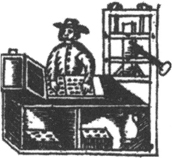
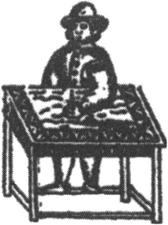
PLATE SECTIONS
TEXT ILLUSTRATIONS
Chapter heads: some of the jobs performed in the household. From Randle Holme, An Academie or Store of Armory & Blazon (Book III, Chapter 3), apparently published in 1688. This is a book of ideas for motifs to be used in heraldry.
THE CAVENDISH FAMILY TREE: PART ONE
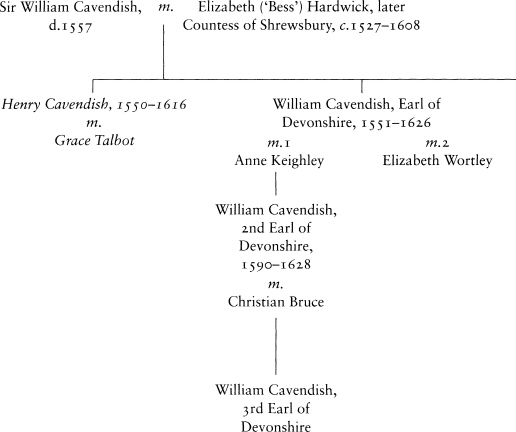
Key: Cavendish of Welbeck. Cavendish of Chatsworth. Other relation.
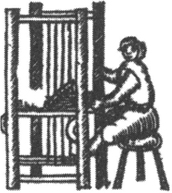
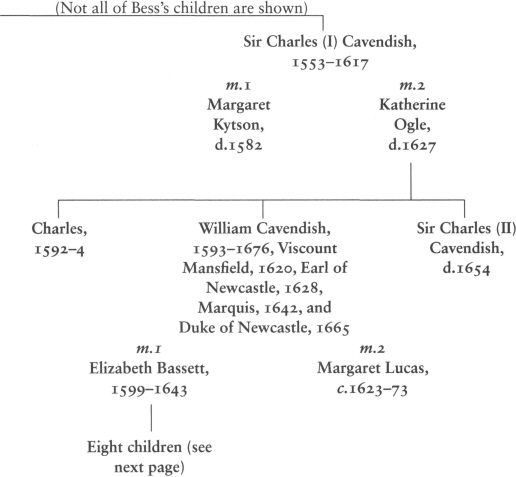
THE CAVENDISH FAMILY TREE: PART TWO
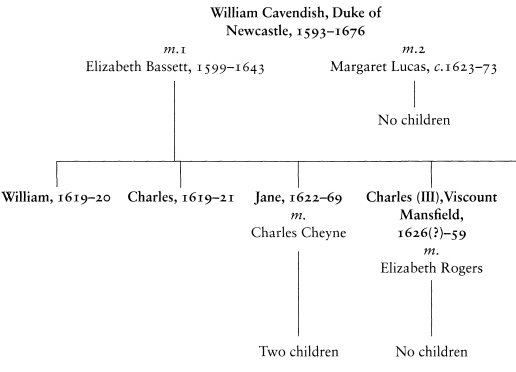
Key: Cavendish of Welbeck. Relations by marriage.
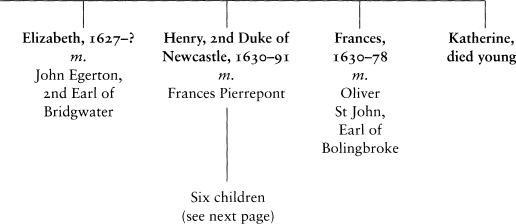
THE CAVENDISH FAMILY TREE: PART THREE
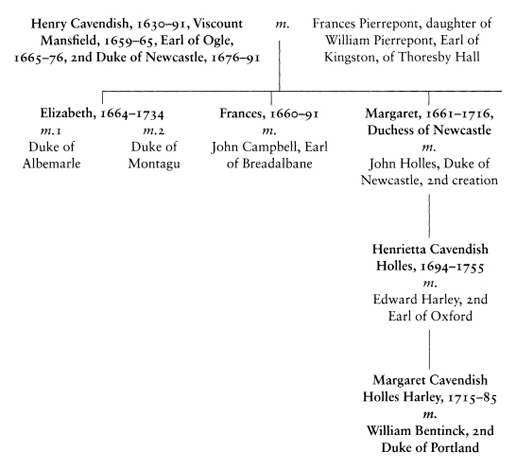
Key: Cavendish of Welbeck. Relations by marriage.

England, France and the Low Countries, showing places mentioned in the story. The insert shows Derbyshire and Nottinghamshire Cavendish country


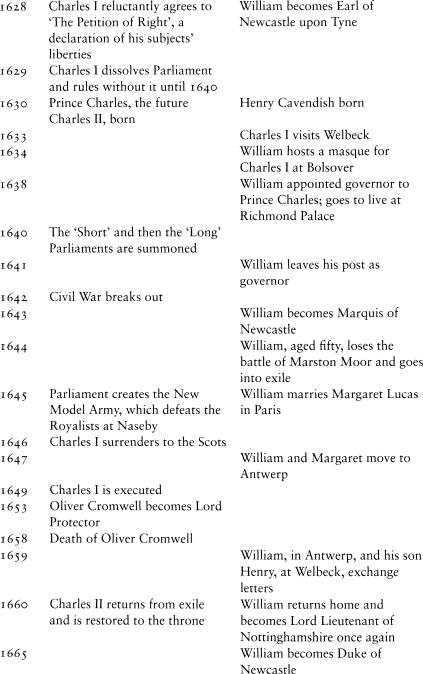
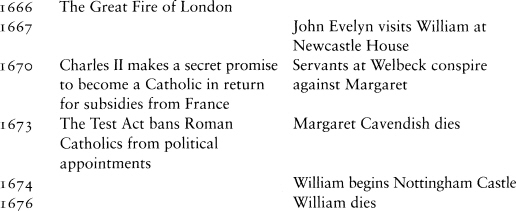
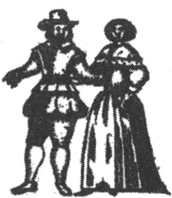
Sir William Cavendish, twenty-three years old, is hurrying through the draughty stone passages of Welbeck Abbey towards the chamber where his father lies ill. A servant opens a low door, and a breath of fresh air accompanies William into a dimly lit bedchamber. His silhouette, seen against the light from the passage, describes a tightly tailored upper body and arms above voluminous breeches. His face and high white ruff show brightly against his dark doublet and his hair is brushed into a fashionable peak over his forehead. Crossing the threshold into the room, William leaves behind one stage of his life and enters another, for his father is suffering from a grievous illness and has summoned his son for one of the most important conversations in a great landowner's lifetime.
Inside Sir Charles Cavendish's room the air is heavy with the scent of fresh blood drained from the patient's veins by his doctors. There is also a tang emanating from his close stool, the upholstered seat that hides his chamber pot. The bedchamber's walls are richly hung with tapestry, and a fringe hangs down from the canopy or sparver of Sir Charles's great curtained bed. Until now, he has maintained his health with some success. Despite his advanced years, he has been a hale, active man, keeping himself fit with regular riding and swordplay, an art at which he is a great master. Such martial pursuits have brought him pain as well as pleasure: today he lies uncomfortably upon an old injury to the buttock that he suffered in a pistol fight with a group of his Nottinghamshire neighbours. Sir Charles has been thrusting, successful and well-connected, but also valiant and generous. He still possesses a clear mind and memory, and his household has little idea of how ill he is. But now, crossing the room and seeing his father's face, William realises that this sickness could be fatal.
As William approaches his father's bed, many other people are waiting to hear why Sir Charles has summoned his son with such solemnity and whether the head of their household is going to pass safely through his illness. At this pivotal moment in the quiet bedchamber at Welbeck Abbey, the very epicentre of the vast Cavendish estates, the fears and expectations of the many members of the family and household remain pinned to their patriarch. Elsewhere in the house, Sir Charles's wife and younger son await news of his condition. They are anxious to know whether Sir Charles believes that he will recover or whether he has decided that the time has come to make provision for the future management of the household. Also waiting for news are Sir Charles's confidential upper servants (many of them his relations), his lower servants going about their menial tasks in the kitchens, gardens and stables, the servants out at the farm, the builders at his half-finished new castle at Bolsover, seven miles away, the tenants of his estates across the Midlands, their own maids and servingmen, the labourers in the fields and the paupers who depend on the Cavendishes' charity. The household and estates revolve like a vast wheel around the fixed point of Sir Charles's bed. As William's father's life moves towards crisis, change will ripple through all these lives, and the power bases and allegiances of the household will now begin to shift.
The person most immediately affected by the danger to Sir Charles's health is the young man now sinking to his knees on the matting of plaited rushes by his father's bed. William is a true Cavendish, ambitious and proud. His grandmother was one of her age's greatest builders: the Countess of Shrewsbury (.1527-1608), commonly known as 'Bess of Hardwick', who constructed the famous Hardwick Hall. William was brought up in the landlocked Midlands, where the country houses built by competitive neighbours form a dense clot of England's most impressive architectural achievements. Sir Charles, Bess's youngest son, is one of the courteous and chivalrous Elizabethan knights who will leave a lasting reminder of their pleasant and prosperous lives in the form of their near miraculous houses, and the new stately suite he has added to Welbeck Abbey is only one of his many building projects. The grandson of a Derbyshire sheep farmer, Sir Charles is now the proud possessor of an abbey, a castle and two healthy heirs.
Next page


